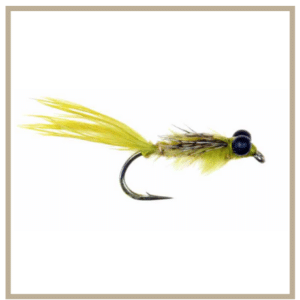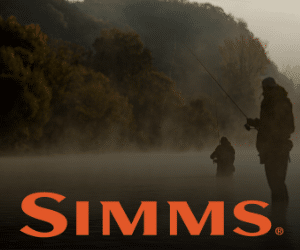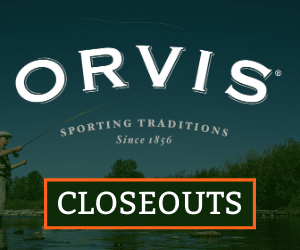Damselfly nymphs are of the Odonata family, which includes Dragonflies and Damselflies. Damselfly Nymphs is the first stage of their life hood. It is here where they are aquatic predators of other aquatic insects, and also prey to Trout at the same time. As a result, many fly anglers use Damselfly Nymphs flies to collect a large bounty of fish while fly fishing.
Damselfly Nymph
This is a complete guide to everything you need to know about the Damselfly Nymph fly.
Damselfly Nymph flies work very well for Trout, Sunfish, Bass and more.
How To Catch Fish W/ The Damselfly Nymph
Damselfly Nymphs (or larvae) spend most of their hours in the water, hence being aquatic insects. Trout will eat nearly any living creature in the water, (even mice), so it’s no surprise that Damselfly Nymphs are a popular source of food for the trout.
Damselfly Nymphs are in or around the water for most of the year. They won’t venture out of the water until they have turned into full fledged adults.
However, because they spend so much time in the water, they are apt to get eaten by trout. As a result, A local fishing blog wrote that “Damselflies have learnt that the best way to prevent getting eaten by trout is to head for the weeds.”
So what should a smart fly angler do? Use Damselfly nymphs in the weeds. You are going to catch a lot of fish in the environment that the fish expect to see Damselflies.
Obviously, Damselflies go the weeds to hide from the fish. But that does not mean the fish cannot see your flies.
Make it obvious when fishing Damselflies nymphs.
They aren’t limited to the weeds completely though. Damselflies catch a lot of their prey on other rocks and areas with aquatic plants. Their main source of food comes from lying in wait of other insects, and then eating them as they go by.
What does that mean?
It means look for rocky areas with aquatic plants in the water. This is where you will catch a lot of Trout using the Damselfly nymph.
Use the biology of the Damselfly against the Trout.
When the water heats up, the nymphs will turn into adults. This is important, because this is when most of the Damselflies get eaten. In the process of leaving the water, they have to swim to the top. Trout will then snag the Damselflies on their way up to the top of the water.
When you are using the Damselfly Nymph on your line, after the cast – allow it sink a ways down. Damselflies catch prey on the bottom of the lake, but when they turn into adults, swim to the top. If you can simulate the Damselfly Nymph living on the bottom of the water, and then moving up to the top – you have a great chance of fooling a trout into biting.
It simulates a Damselfly that is trying to escape to the top. Bam. Fish on.

Related: Pheasant Tail Nymph
Additional info
Damselflies have elongated bodies with long tails. They have very large eyes in proportion to their bodies, and have 6 legs. For most of their life however, they are nymphs in the water. When the water is at it’s warmest, you will find the most adult Damselflies in the water.
Female Damselfly Nymphs also fly near the top of the water to drop eggs, and trout will occasionally jump out of the water and eat them during these times. I personally have never seen this happen, but it would be very cool to!
When the female Damselfly drops those eggs into the water, this is when the process of becoming a full fledged Damselfly starts, as a nymph. For the next several years, these nymphs won’t leave the water, surviving only on insects that are smaller than themselves.
Related: Parachute Adams Fly
How to tie a Damselfly Nymph
A lot of fly fisherman enjoy tying their flies, as it’s a lot cheaper with the expense of your time.
This video goes over how to tie a Damselfly Nymph very well.
Damselfly Nymph Flies
Damselfly Nymph flies work very well for Trout, Sunfish, Bass and more.
Check Price on Amazon
Thank you for your support! We may earn a small commission (at no additional cost to you) if you purchase through links on FlyFishandCamp.com.
Damselfly Nymph flies work very well for Trout, Sunfish, Bass and more.
Damselfly Nymphs Conclusion
Damselfly Nymphs are a great choice to use when looking for Summer trout bait. (Or whenever, really). These aquatic insects spend a lot of their time on the bottom of the water, in patches of weeds, or other plants. It you are fishing a rocky area, so much the better.
Trout like any fish, will follow the food.
The best way to catch a trout on the Damselfly Nymph is to simulate how the Damselflies leave the water by scurrying up to the top and out. This is where the trout will snatch them up, as they try to escape.
The process of becoming a full fledged adult, Damselfly starts when a female Damselfly, flies over the top of the water and drops her eggs. Depending on the Damselfly, they might spend the next 5 years of their life in the water, eating other insects and avoiding getting eaten by trout.
These nymph flies are some of the most popular trout fishing flies, because they produce great results on the water. I would recommend picking a couple up, especially when the water turns warmer.



